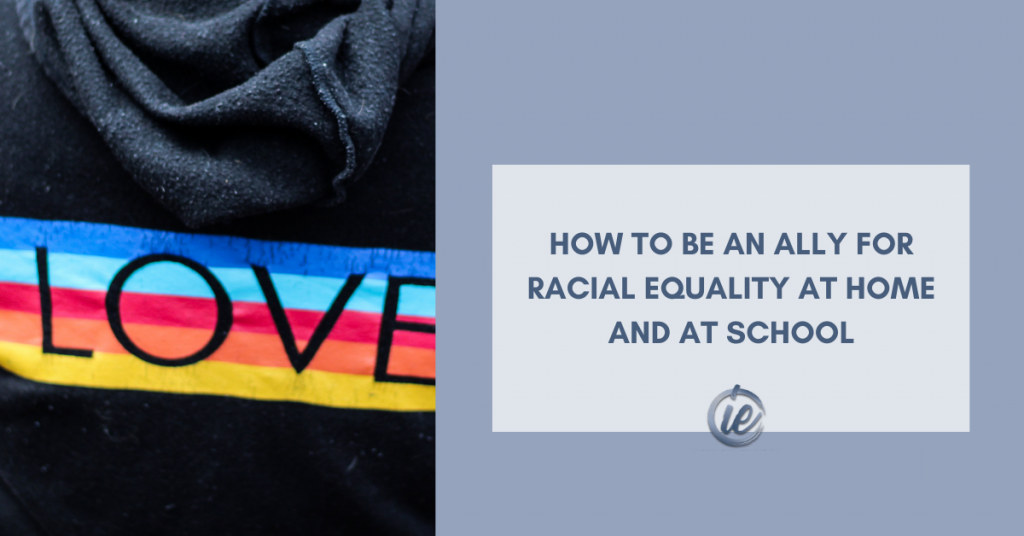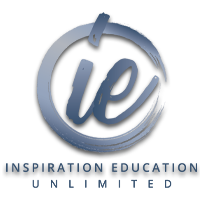How to be an Ally for Racial Equality at Home and at School
“Injustice anywhere is a threat to justice everywhere,” is a famous quote from Dr. Martin Luther King, Jr.
I spent a lot of the summer of 2020 processing the meaning of this quote through the lens of the racial tensions that erupted here in the USA and abroad internationally.
I have to be honest. June 2020 was an intense, emotional month for me.
I’m sure it was for many of you as well. As we were completing the last 2 weeks of distance learning in my school district in the midst of COVID-19, the streets of America and abroad were filled with protesting, rioting, anger, fear, and unrest. It was exhausting.
So many questions and things to process for me such as…
How am I really feeling now?
Who are people I consider safe and want to engage in conversation?
Who do I need to avoid at this time?
How much social media should I consume?
What information in the news is true? What information is untrue?
How do I talk to my family members, close friends, and fellow teachers and educators who are white about this sensitive subject?
How do I help my 9 year old daughter understand what is going on with all the racial tensions and conversations she is hearing from adults and in the media?
Maybe you can relate and connect with some of these questions because you have had them yourself or ones similar.
As many people got louder and more vocal during this intense time, I got quieter and at times silent.
It wasn’t because I didn’t have a lot to say or I didn’t want to say a lot. It was because I had so much to say and didn’t really know how to express it.
I had so many emotions inside of me and wanted to process them in a manner that allowed me to “respond” in a balanced way to the racial tensions impacting us and not “react” prematurely.
Here are the lessons I learned during this process.
I hope these L.O.V.E. lessons not only challenge you, but inspire and motivate you to act in ways that move us closer to racial harmony rather than create more division and separation.

L: Listen Actively
The first lesson I learned during this process was to actively listen. Listen to others regardless of whether you share the same viewpoint or not.
We all grow up having different experiences and exposure to racial discrimination and other injustices.
For those who haven’t experienced racism or racial injustices, it is important to listen to those who have encountered it. Listen without feeling the need to respond, give advice, apologize, or make the other person feel better.
Speaking for myself, as black male raised in the inner city, I have endured bigoted experiences throughout my life within the classroom and in my personal life as well. I rarely if ever shared any of those experiences with many of my white friends and teacher colleagues. Mostly, because speaking about those things I knew would make them uncomfortable.
However, during these times of racial unrest, I was able to share my experiences and frustrations in a way that felt safe with some of my fellow white friends and education colleagues.
Why? They were open to hear my stories, which they never had to ever encounter in their life.
I spoke of my experiences to share the reality that racism does still exist in many covert and not always overt ways.
I wasn’t looking for sympathy or pity. It is nice to just be seen, heard, and validated. Period. Sometimes providing a safe emotional space is all that is needed.
To my fellow black and brown friends and colleagues who have experienced any form of racial injustice directly or indirectly, I encourage you to listen as well. Actively listen to those who sincerely want to engage in dialogue over the current events related to race.
Due to their upbringing or past and present experiences, some of your white friends and colleagues may not understand how discrimination and issues of race play into everyday life for people of color. The recent events, coupled with the protests, riots, and outrage is a wake up call for many.
This new awareness doesn’t automatically translate into antiracist actions…
It will be a process of discovery and growth over time.
In the classroom, really start listening to your students and their parents.
Become aware of the needs of your students and families, especially those who may be directly impacted by racial inequalities and inequitable practices. Then, endeavor to make your classroom environment as inclusive as possible so students and parents from marginalized groups can feel seen, heard, and safe.
O:Organize Allies
The second lesson I learned during this time of exploration was the importance of organizing allies on this journey to promote racial equality and reconciliation.
As I began to have conversations with people about the racial tensions in our country, I began to see that there were other people who had similar thoughts, ideas, and frustrations as I did and wanted to continue and deepen the conversations together.
That desire was not out of obligation or fear, but out of genuine concern for the state and direction of our country regarding racial matters.
More importantly, I found people who had a heart to go deeper. They were willing to lean into the discomfort and have difficult conversations out of a desire to grow in knowledge and have more genuine relationships with me and others.
In these times of unrest, organizing a group of allies that you can learn, grow, and process together is essential on the journey towards racial equality.
In your school building and within your district, be on the lookout for fellow colleagues who you can become allies to address racism and inequitable practices that impact your students and their families.
V: Vote Regularly
In many of my conversations with my white friends and colleagues, I was often asked the question, “what can I do to make a difference?”
My answer has always been to start by influencing your sphere of influence and realizing the power of voting.
During a presidential election year is often the time when people turn out to the polls and vote. While it’s important to vote in a presidential election for our nation’s leader, people tend to neglect the state and local elections that occur every year where they reside.
In fact, a lot of the real change that will directly impact the racial climate in your geographical region comes through the local leaders that are elected to serve your community.
Your state representatives, mayors, judges, city council members, education board members, etc, make decisions that promote or harm the policies and efforts to support racial equality and address inequitable practices in your immediate area.
How can you make a difference?
Research candidates and their policies. Then, vote. Vote. Vote.
As an educator and teacher, discover how policy and curriculum decisions are made and decided upon in your district and school building. Then, if given an opportunity, vote on curriculum and practices that are inclusive, multicultural, and antiracist.
E: Educate Yourself
Finally, one of the biggest lessons I learned over the past few months was to remain teachable. Educate yourself on different perspectives regarding issues of race in the USA and abroad.
There are plenty of primary resources in the form of articles, books, podcasts, documentaries, and films that can continue to personally educate you, your family, and students on the issues of race and the historical significance it has had in the United States and globally.
Many of these resources out there currently have been out for a long time, but rarely have got any attention or were omitted in the history books we grew up studying.
In addition, many of the current curriculums taught in our school system don’t include perspectives that are antiracist or are from the point of view of people of color.
Dig into some of these resources and get involved in educational social media groups that promote ways to build awareness on the issues of race, being an antiracist, and promote racial reconciliation.
Steer away from getting your education on issues of race from social media posts or the internet without vetting them first. There is so much misinformation out there that people take at face value.
This just makes racial tensions worse and distracts from learning and educating ourselves from thoroughly researched primary sources of information.
While educating yourself is valuable alone, you may have more enriching conversations and can share what you are learning in the company of other friends, colleagues, and the allies that have emerged on your journey.
My school district had a bunch of voluntary learning groups this summer for teachers who wanted to go deeper and build greater awareness about promoting racial equality for themselves personally.
Some joined learning groups to learn about the resources available for younger and older students that can be incorporated into the classroom climate, culture, and curriculum.
Personally, I joined an online learning group with some friends from high school. The goal of the group was to learn and grow together by studying books, film, and other media related to race and how they intersect the past and present day social issues we are experiencing in our country and in the world currently.
We meet once a week and discuss a book, video, or film suggested by participants of the group. This group has been such a wonderful space for me to learn, process, and challenge myself and help make sense of the racial issues impacting us today.
If you don’t have a group to learn with, consider starting one in-person over coffee or online . You don’t have much to lose, but a lot to gain from this collaboration with friends and fellow teacher colleagues.
In closing, these four L.O.V.E. lessons I learned over the summer I will continue to incorporate in my life and experiences as an individual, parent, and teacher/educator.
We never arrive. We are all works in progress. Usually, we go from ignorance of racial inequalities to an awakening and awareness of their existence. Then, through education and an examination of our own biases we can move to a place of personal transformation that impacts those in our sphere of influence.
Wherever you are in this process and continuum, remember to examine your own heart and biases and lean into discomfort.
Then, create change by active listening, forming racial allies, voting for candidates and policies in favor of racial equity, and always remaining teachable.
